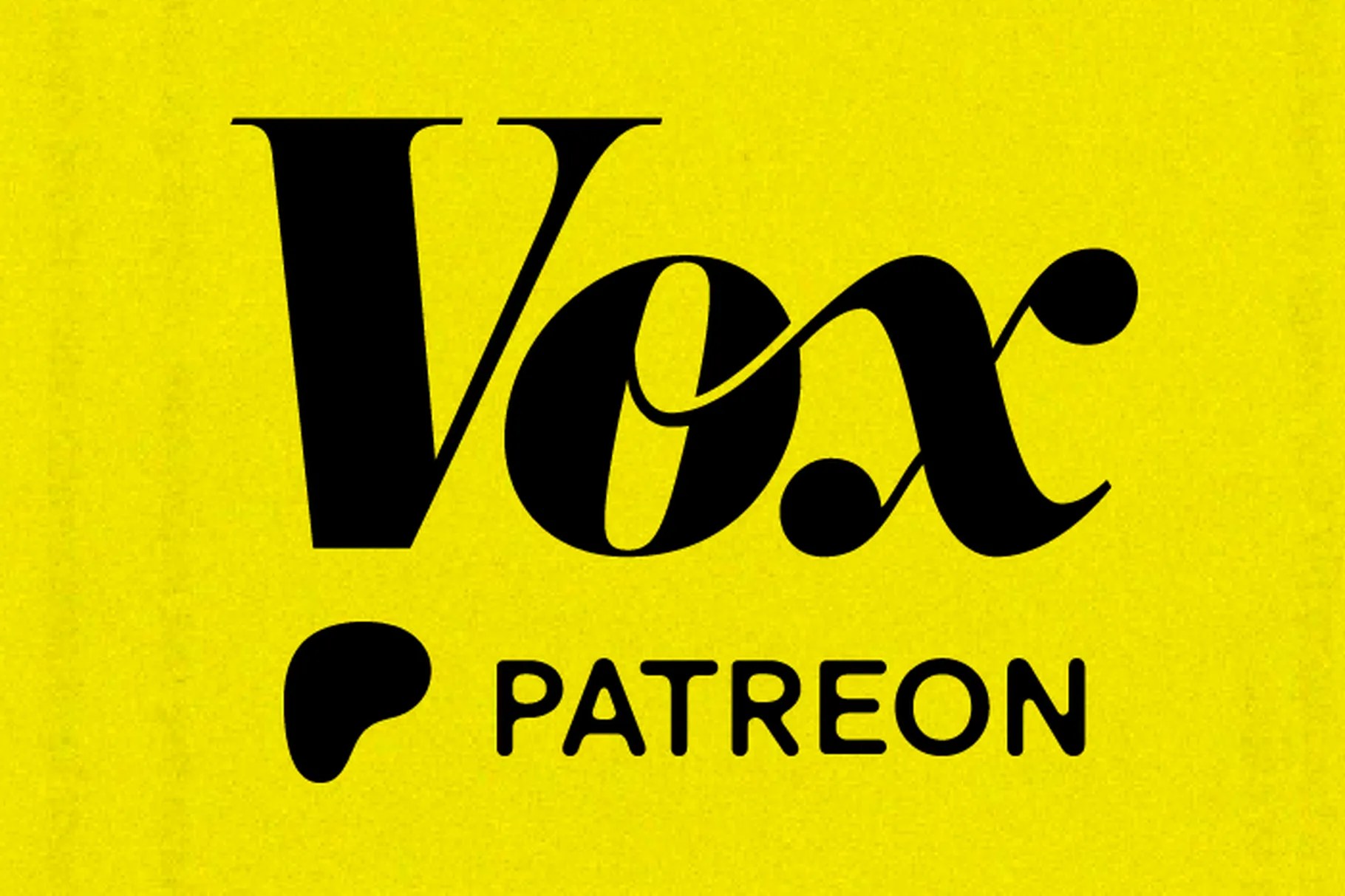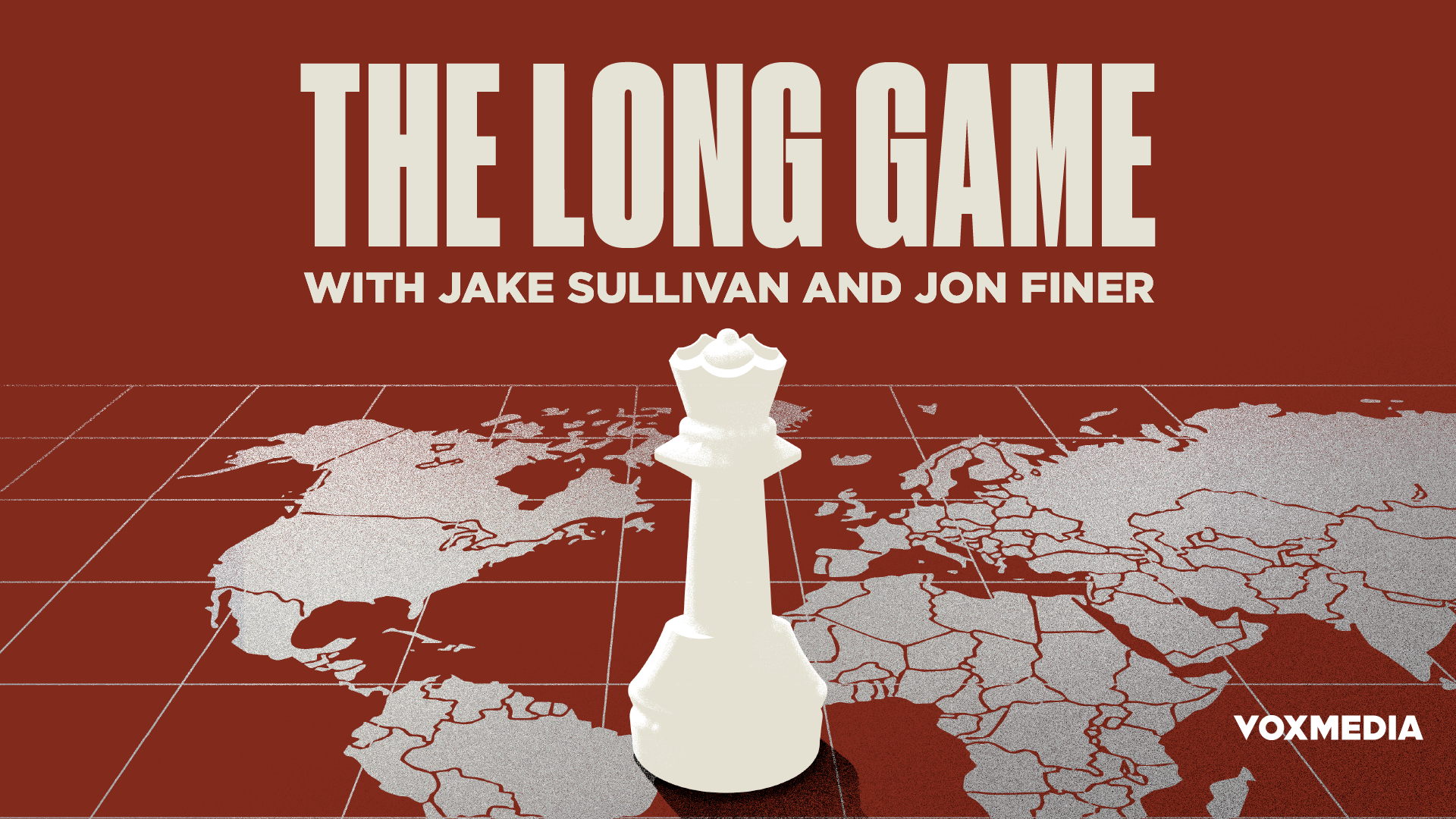SCARCITY MODELS & MEDIA
Before streaming, we watched what was on TV — and often, that wasn’t much. Back then, options were scarce, but in today’s expansive digital landscape, our choices are seemingly endless. This transfer of power— which began well over 50 years ago and continues to expand and evolve— has resulted in a shift from platform to audience to content.
platform to audience to content
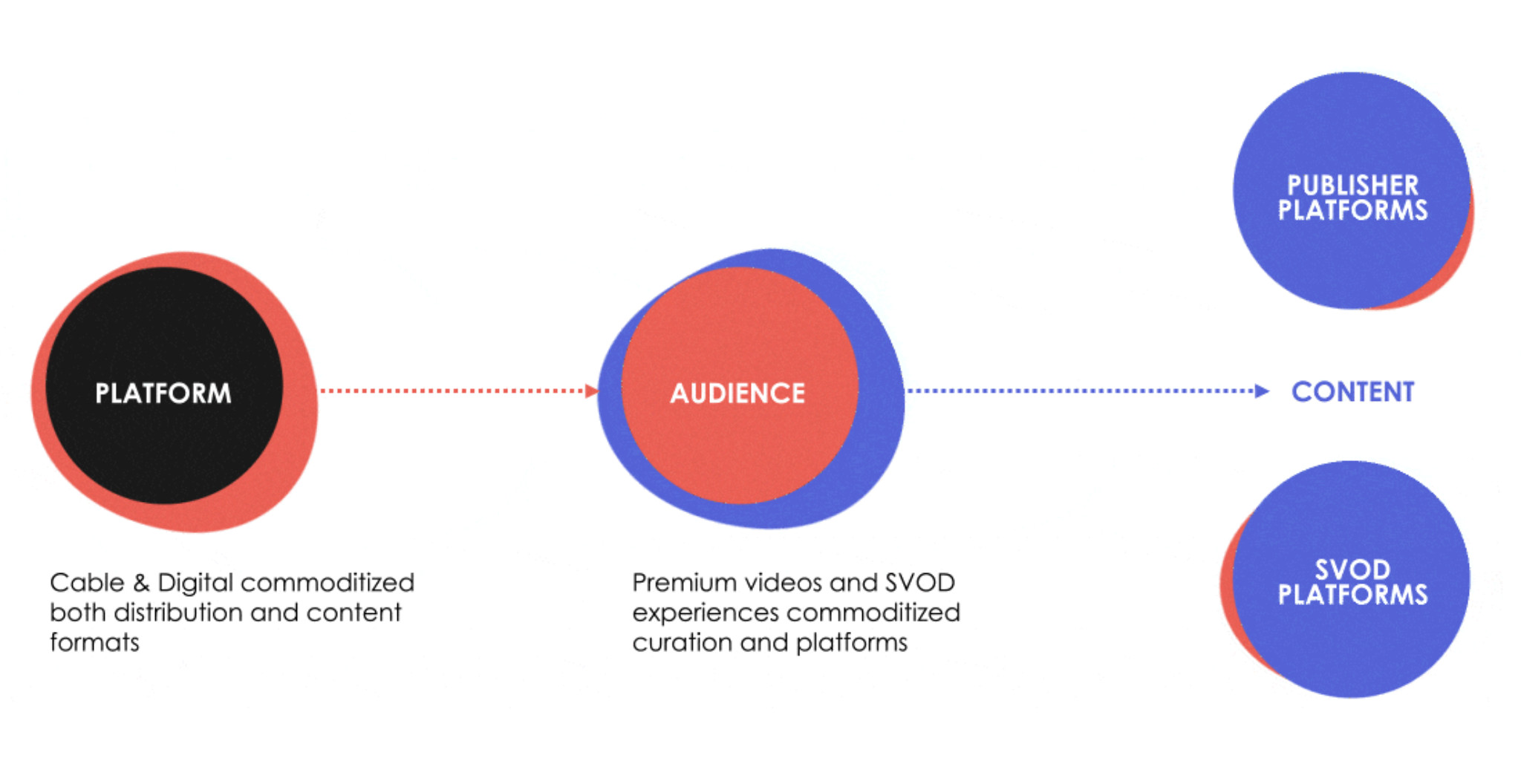
Think of it in terms of scarcity dynamics, which have always been a driving force in the economy. When events create a disruption, systems can rapidly change. During the COVID-19 pandemic, changes in the system impacted toilet paper, consumer electronics, and even cars.
ACT 1: SCARCITY OF PLATFORMS
When we look at the historical nature of media, its ecosystem was originally centered on the scarcity of a few platforms.
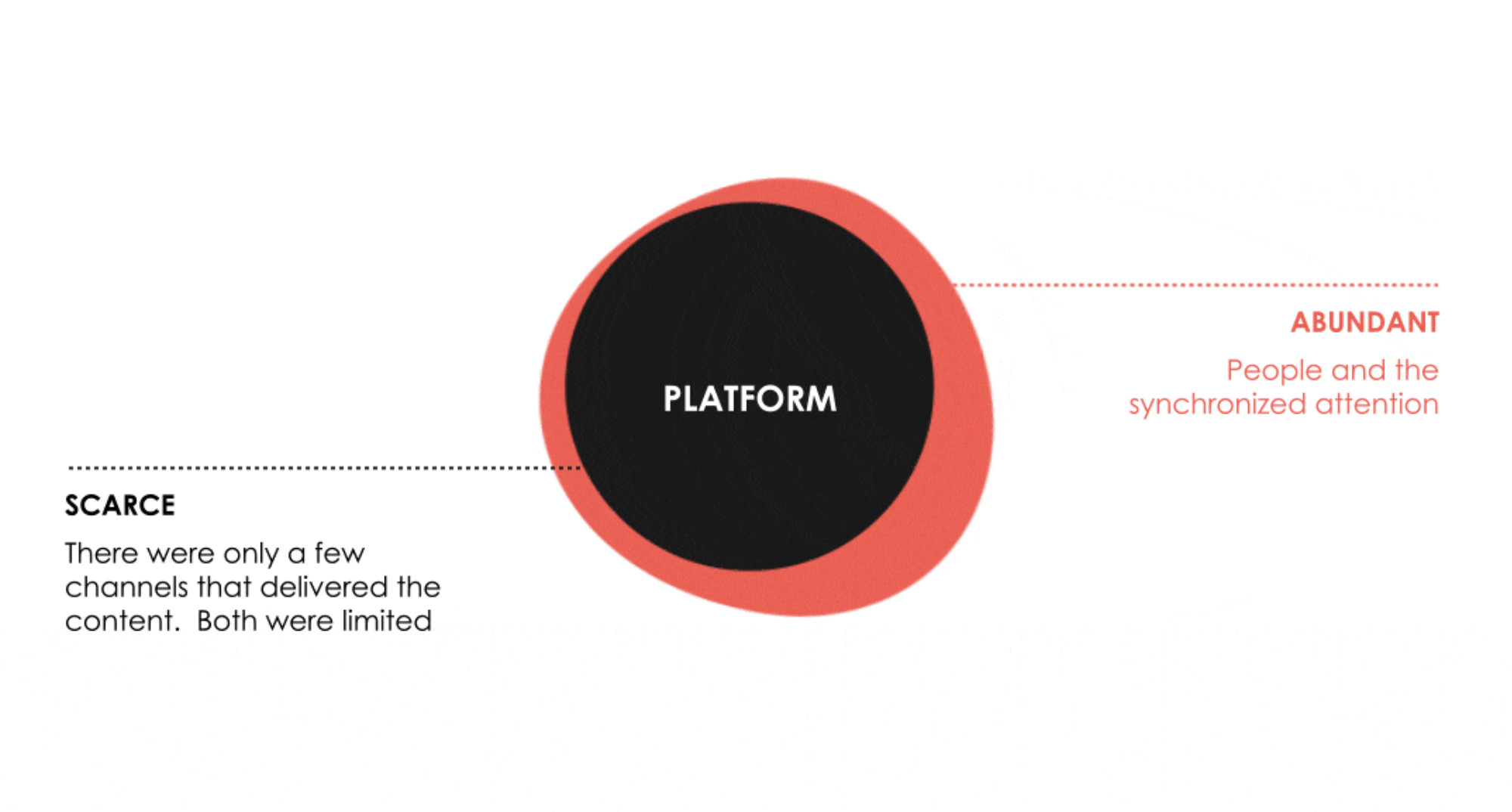
ACT 2: DIGITAL & DATA
Eventually, two things happened to create a large disturbance: 1) The fragmentation of cable channels and digital experiences that created a new dynamic of abundance, and 2) The influx of data from third-party sources.
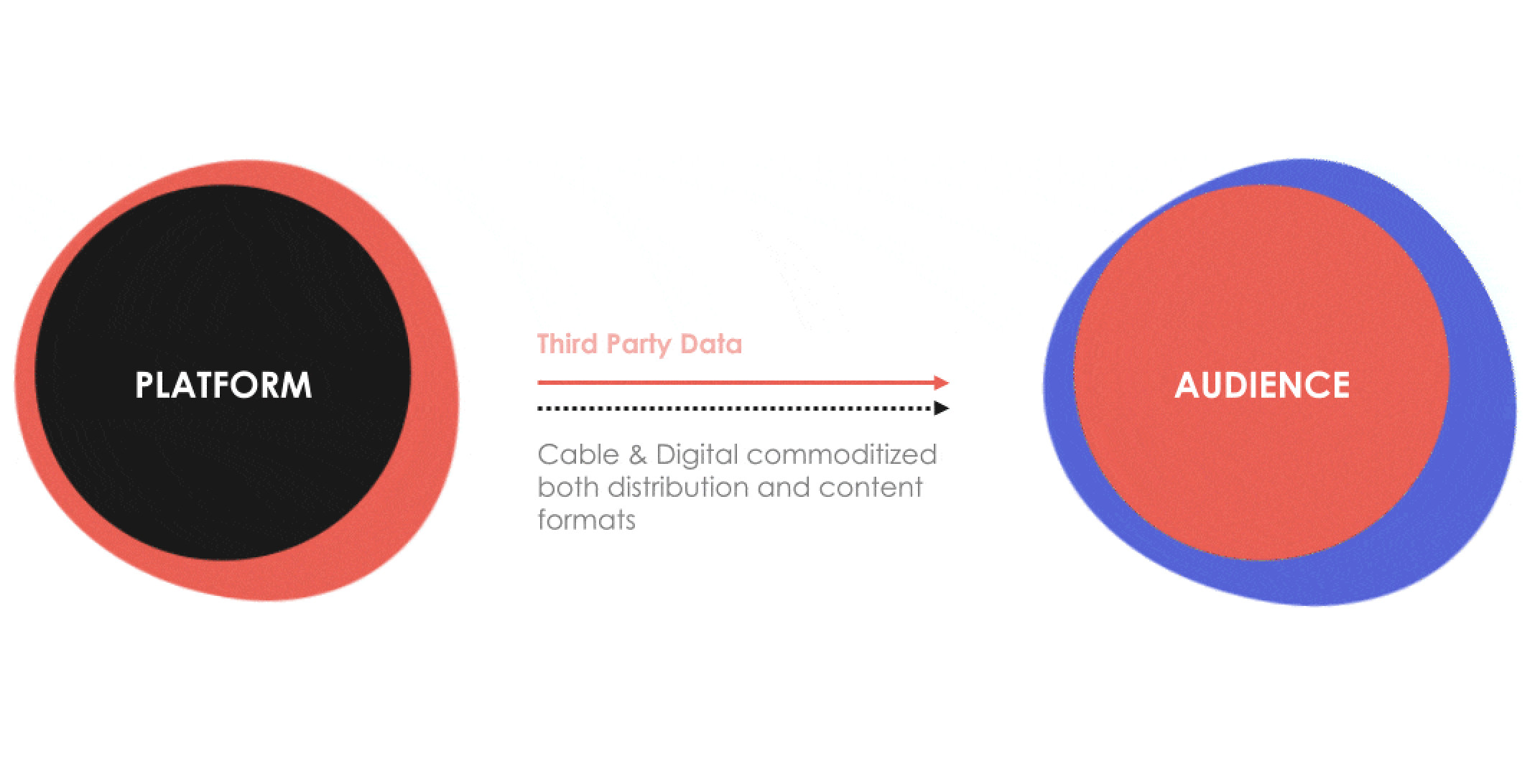
- As a result, we saw a redistribution of power. AUDIENCE replaced the center where PLATFORMS once stood.
- With AUDIENCE at the core, there was an explosion of formats, distribution, and choice. We lived in an age of abundance.
- But even in the digital space, there were still few scaled PREMIUM platforms available: Netflix, Hulu, and Amazon Prime
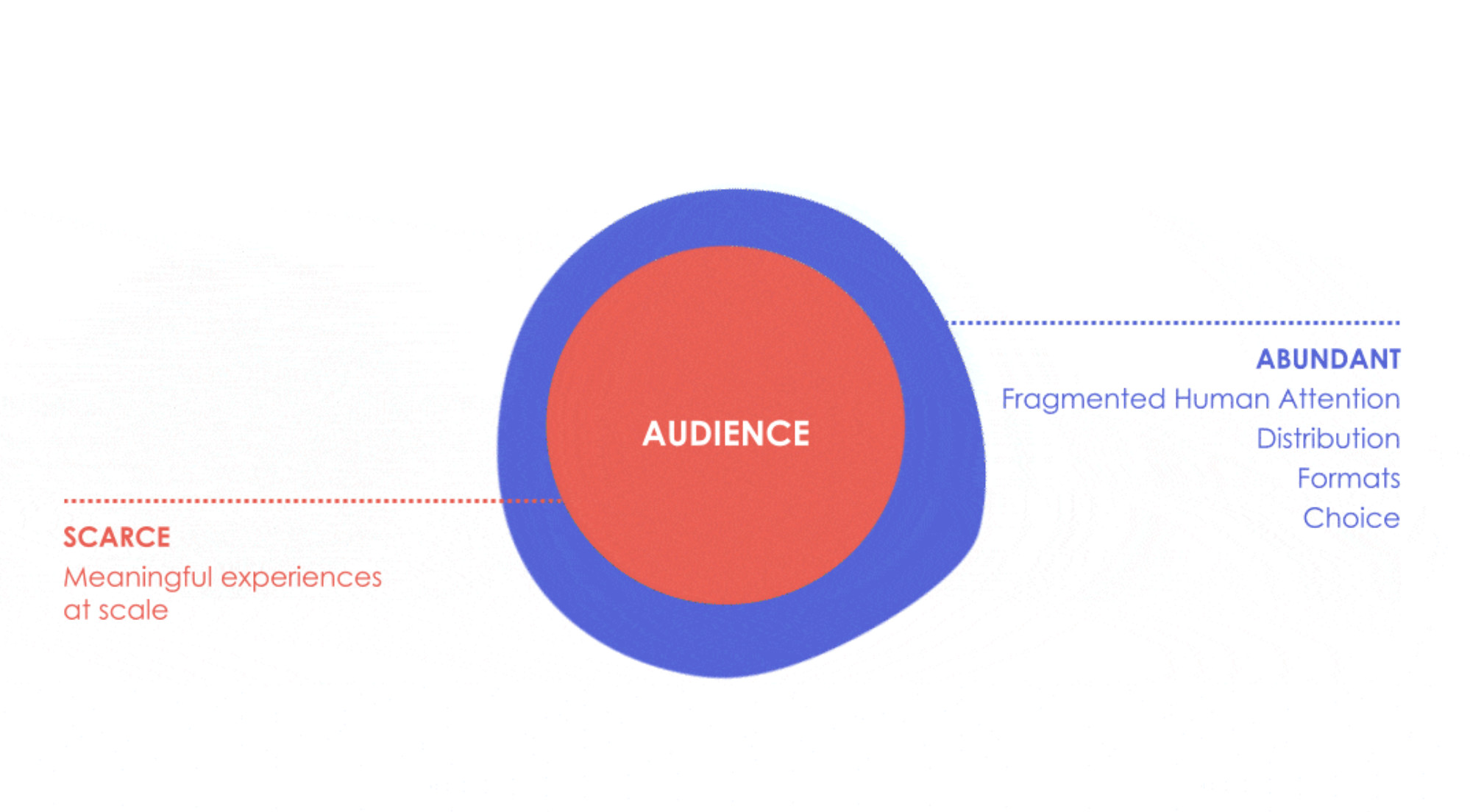
ACT 3: PREMIUM PLATFORMS
By 2021, there has been an explosion of more SVOD & AVOD services, and an ever-increasing audience connection to premium content. All the while, third-party audience data has changed at a rapid pace. Apple’s iOS14 and Google’s Chrome changes will ramp up the demise of the third-party cookie and blur the visibility marketers have into audiences.
The end result is an over-abundance and commoditization of premium platforms. Therefore, audience marketing signals are transferred to the actual content itself.
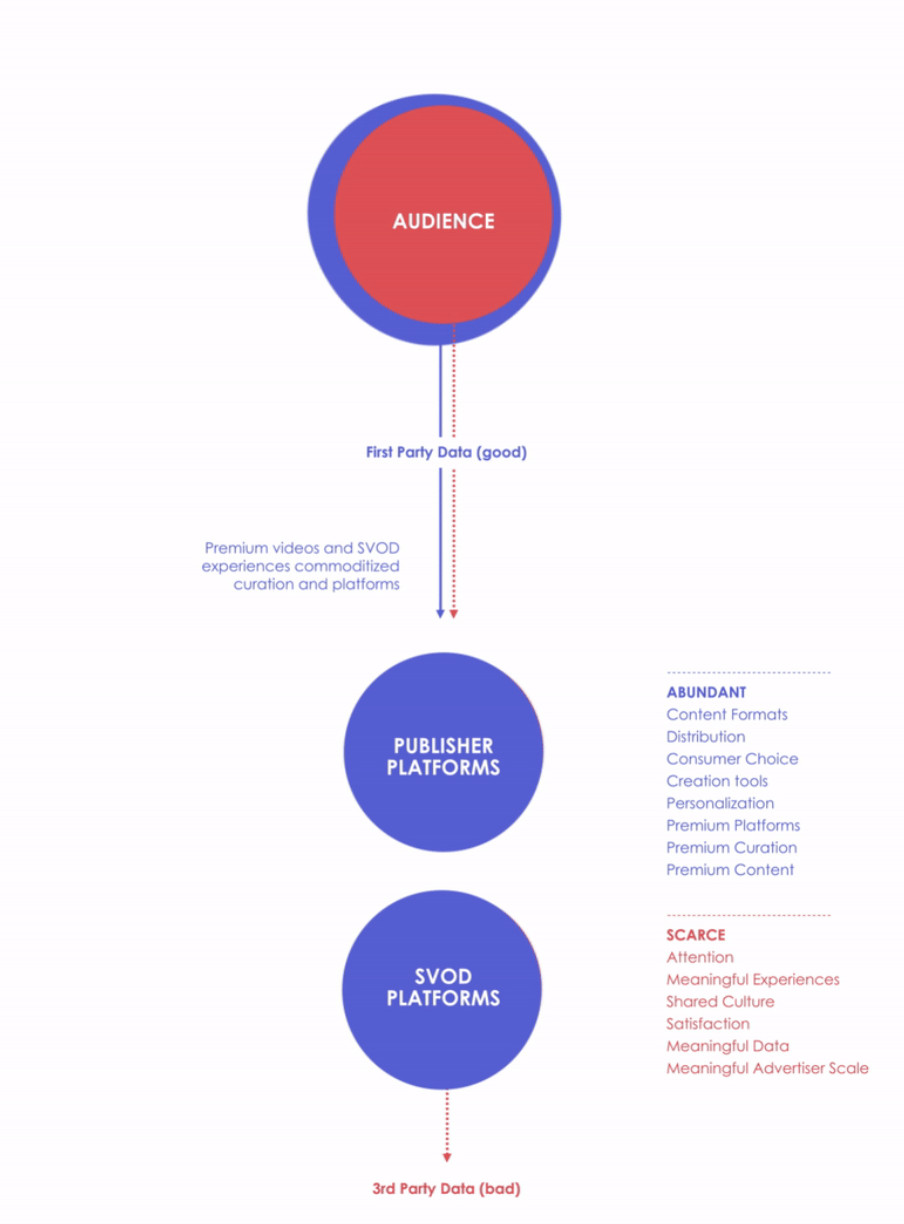
ACTIVE CONTENT CHOICES
Now, with all this new content to consume, we wanted to understand what people consider an “active choice” — i.e., what content do they actively and purposefully seek out? Though third-party data controls so much of what we see, most consumers have some form of content that they truly love.
What we “love” is dominated by things that define us, like music, food culture, shopping, and wellness.
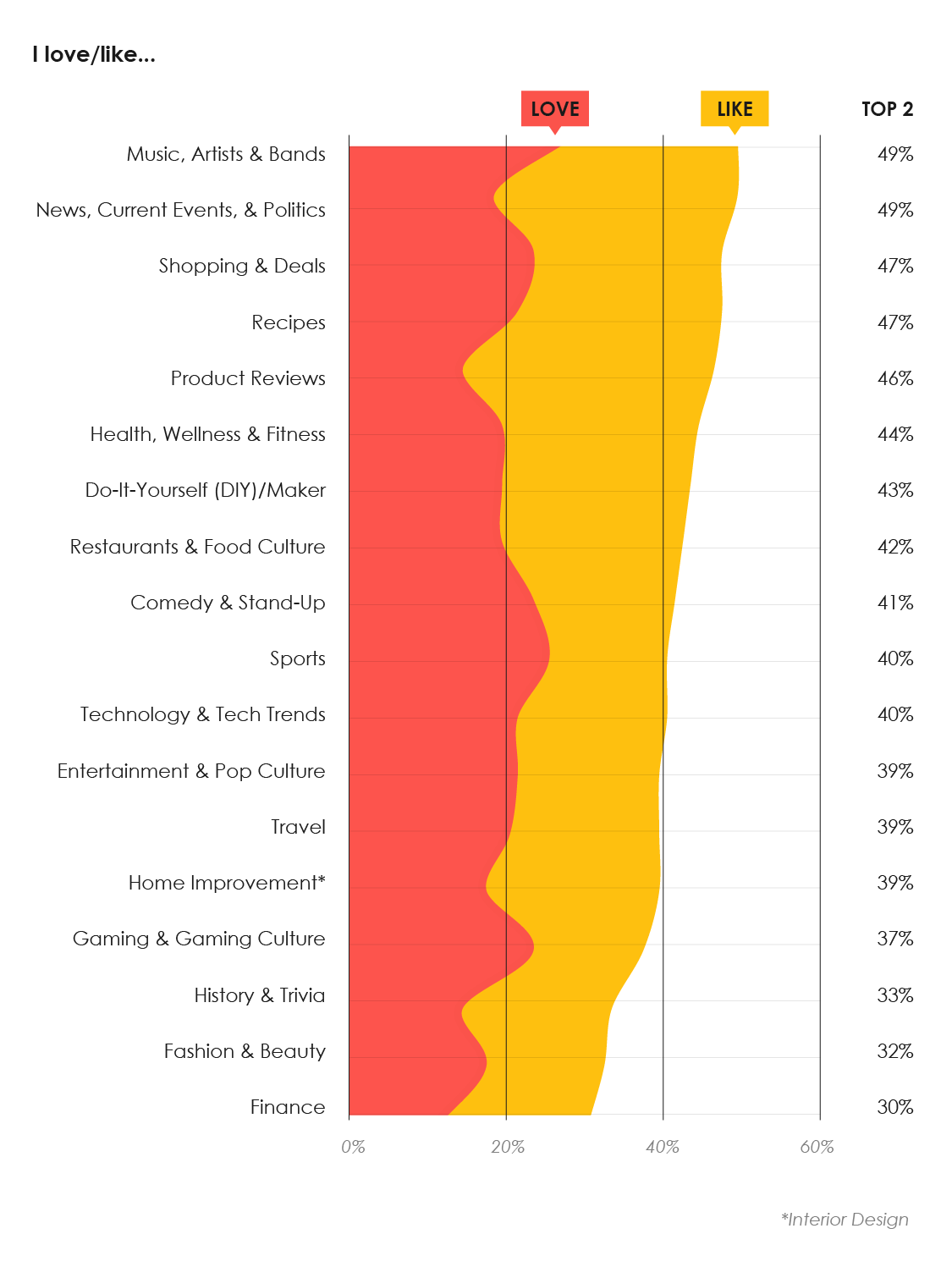
VIDEO IS OUR PREFERRED FORMAT
From long-form articles to podcasts, we’re surrounded by many different formats. But video is the preferred format (with articles coming in second, and podcasts third) for audiences to explore topics that they love.

BEYOND VIDEO
However, some types of content easily extend into other formats beyond video. Topics like gaming, sports, and fashion are more primed for video, but consumers are also enjoying reading news articles and listening to podcasts. Great content is multi-hyphenate.
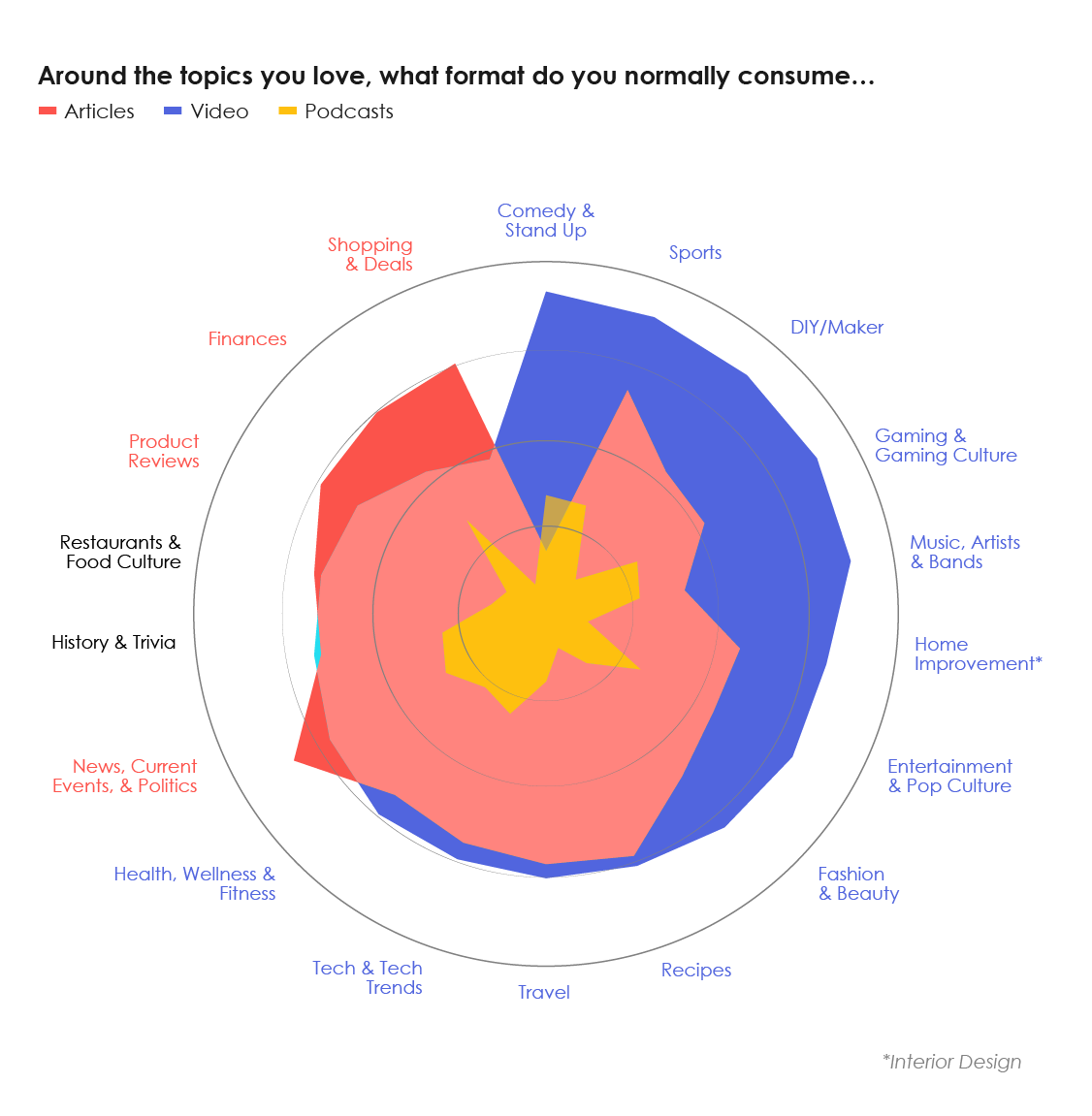
I AM WHAT I WATCH
Ultimately, what correlation do people see between themselves and the content they consume? We gave consumers a list of over 20 attributes and asked which ones applied to them.
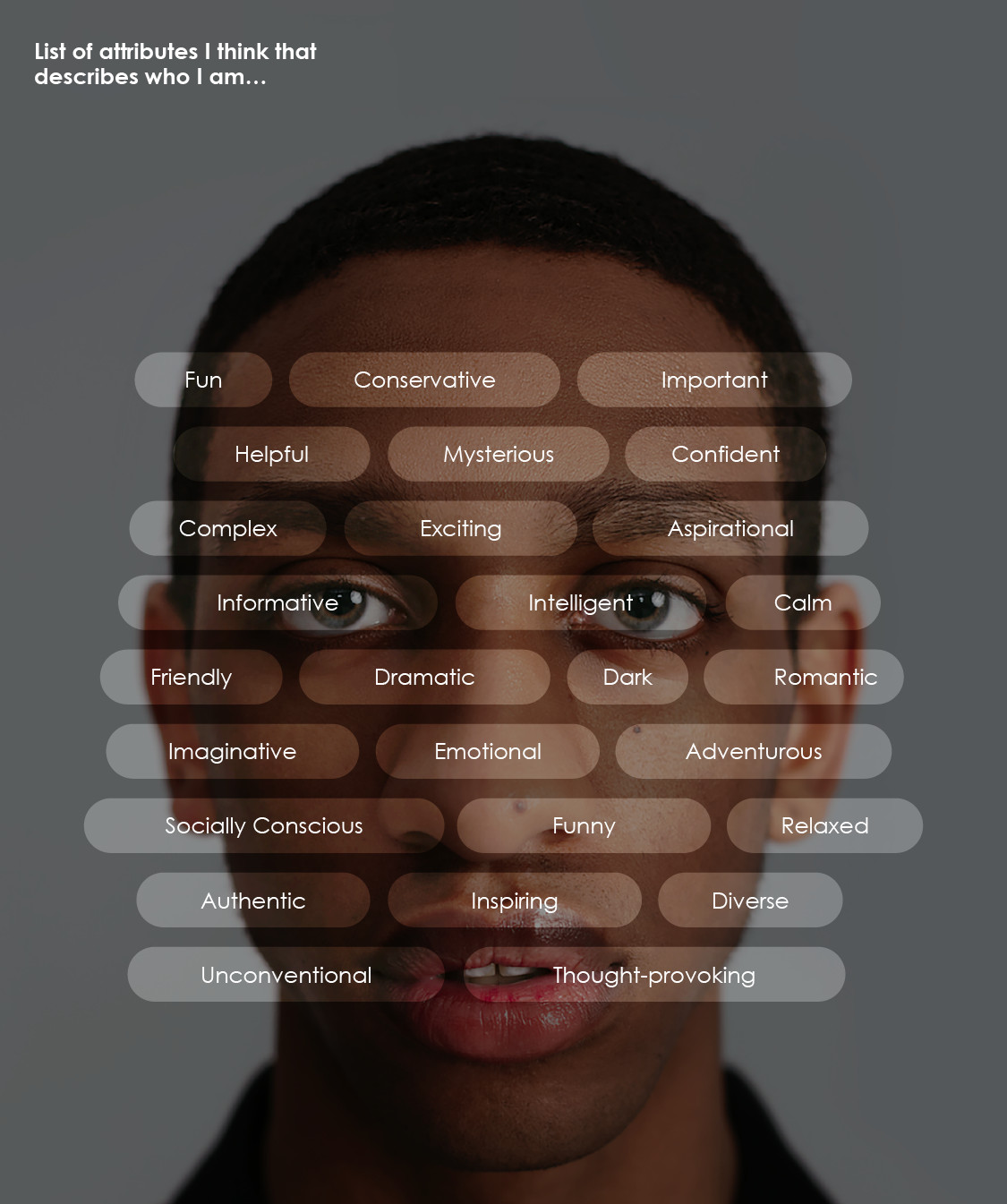
Then, we asked them about the content they love, and finally, had them describe that content using the same list of attributes. As you can see, there is a clear correlation.
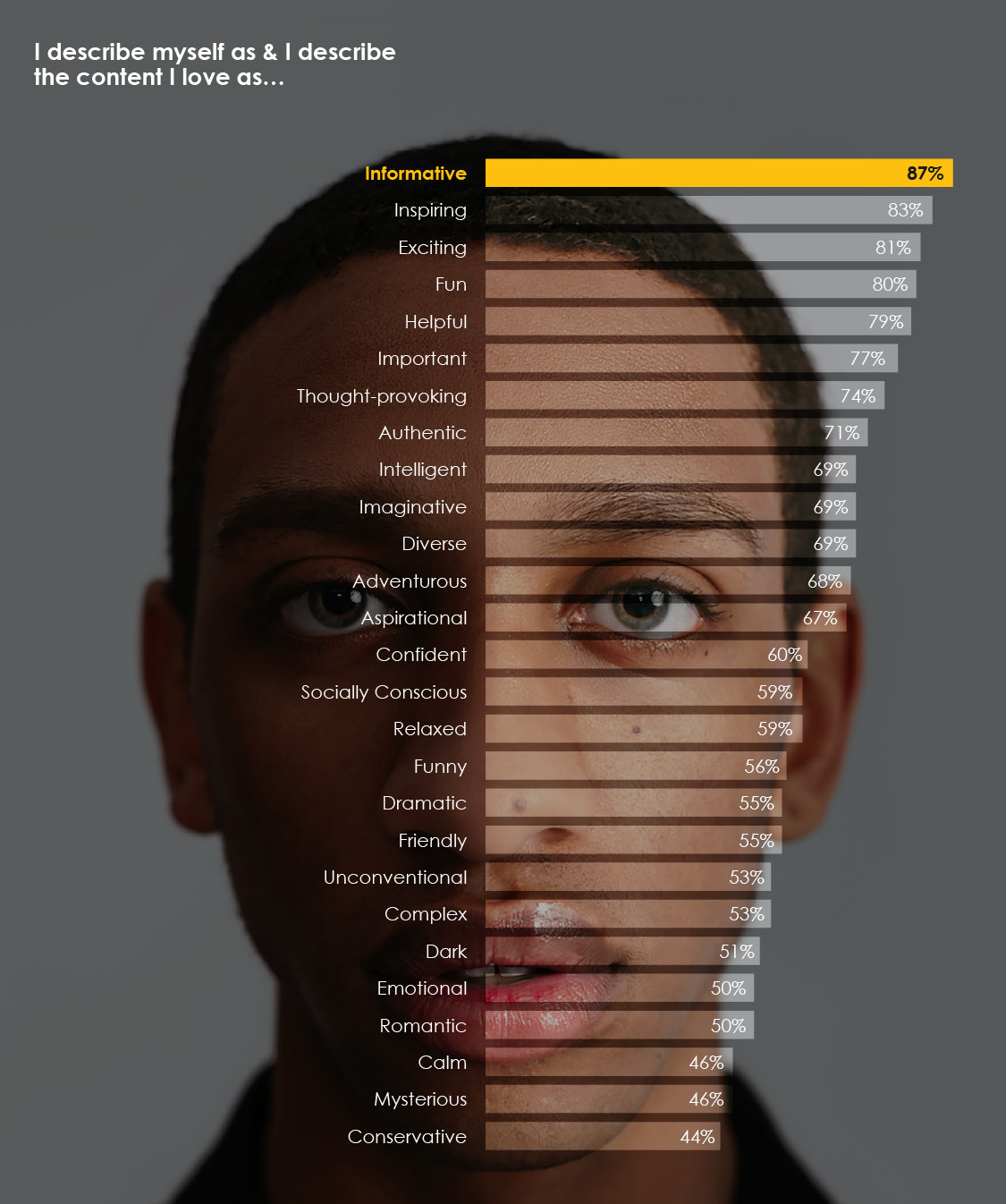
WHY THIS SHOULD MATTER
It’s clear that our content consumption habits are related to our spending habits; we found that 86% of consumers make purchases around the content categories that they “love/seek.” We are what we watch— but we also buy what we watch.
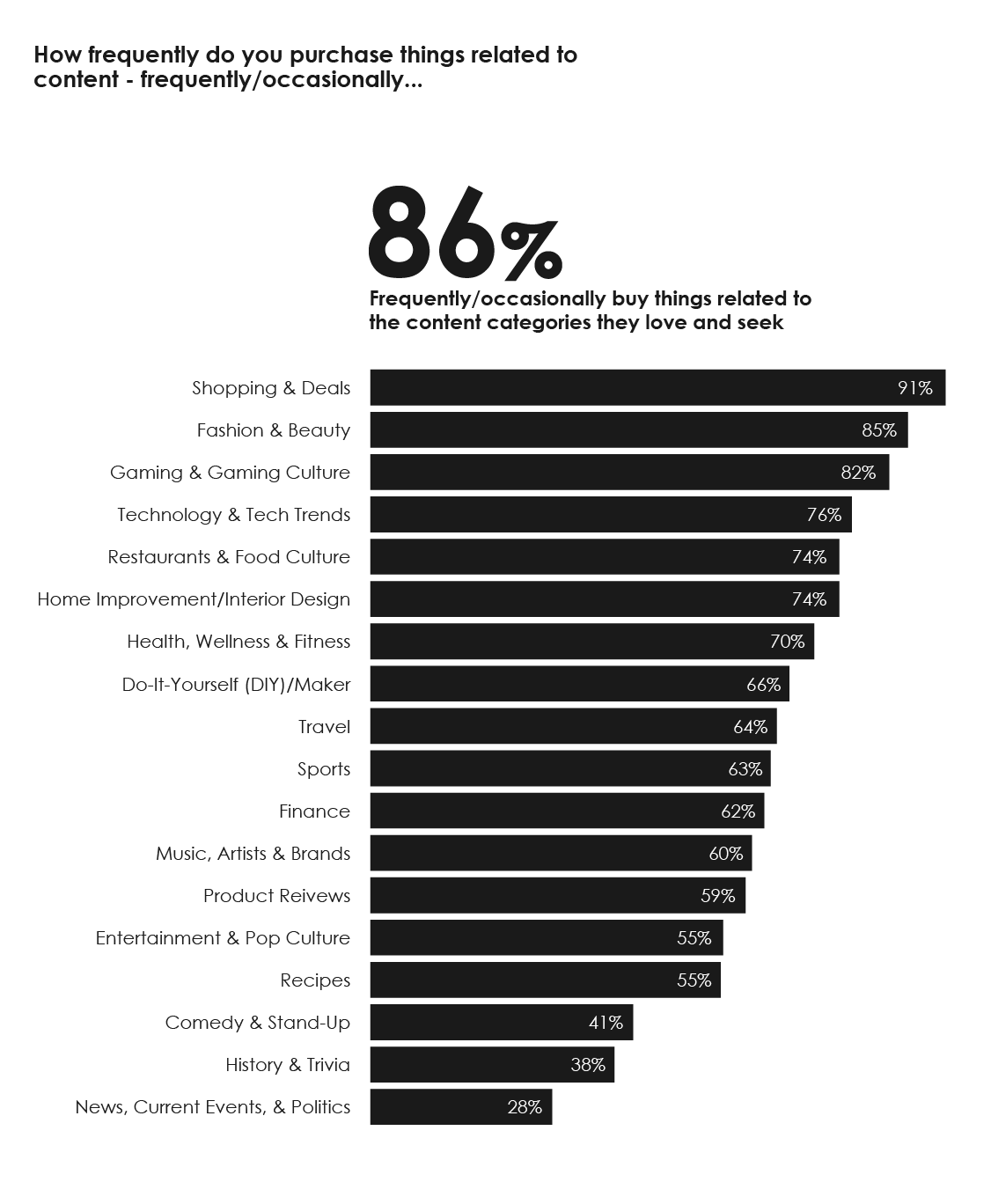
CONTENT IS IDENTITY
Where we are headed next is a continued shift around a content-centric system with a core focus on what creates identity.
Thanks in part to the multitude of data points collected from users, most marketers would argue that social media is the digital space most closely related to identity— however, that’s rapidly changing. Our consumption habits around streaming services, video, and podcasts may very well serve as a portal providing an unfiltered view into our true interests, proclivities, and even biases. What we CHOOSE to consume versus what gets algorithmically delivered will help us understand what defines us, what represents us, what we are passionate about, and what drives purchase.
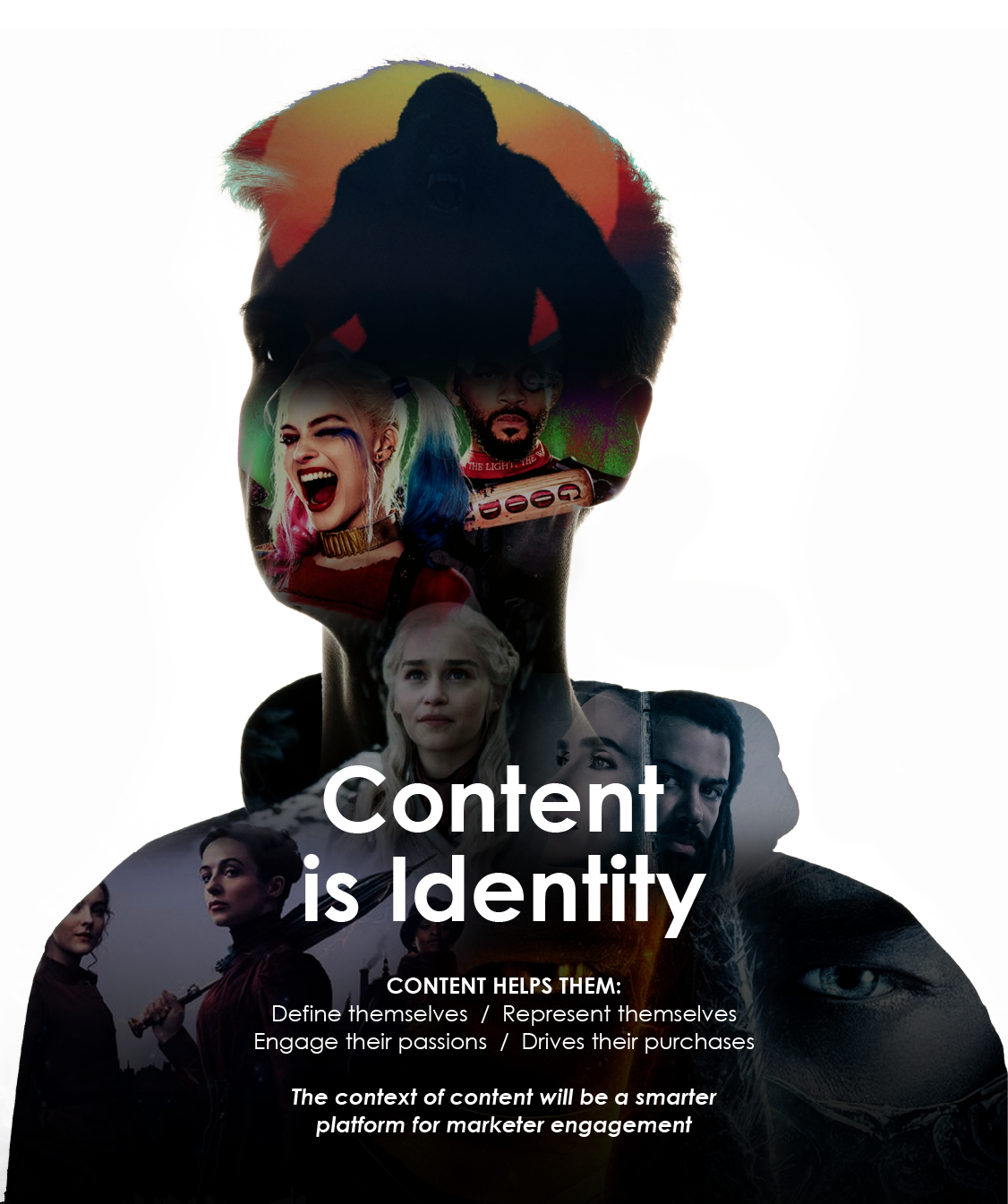
With this clearer understanding of identity, we gain a much stronger context for developing sticky content, and positioning our platforms in more meaningful ways (especially once new online privacy regulations commence in 2022). The more premium the content, the better the signal for the user, the advertiser, and the ecosystem.
Contributors: Linh Mata, Edwin Wong, & Loren DiBlasi. This work was in direct partnership with Warner Media. Special thanks to our partners KS&R & The Circus, an insight and data storytelling consultancy that specializes in original trend research, thought leadership, and strategic brand positioning rooted in a human-data centric approach.


